 Image 1 of 12
Image 1 of 12

 Image 2 of 12
Image 2 of 12

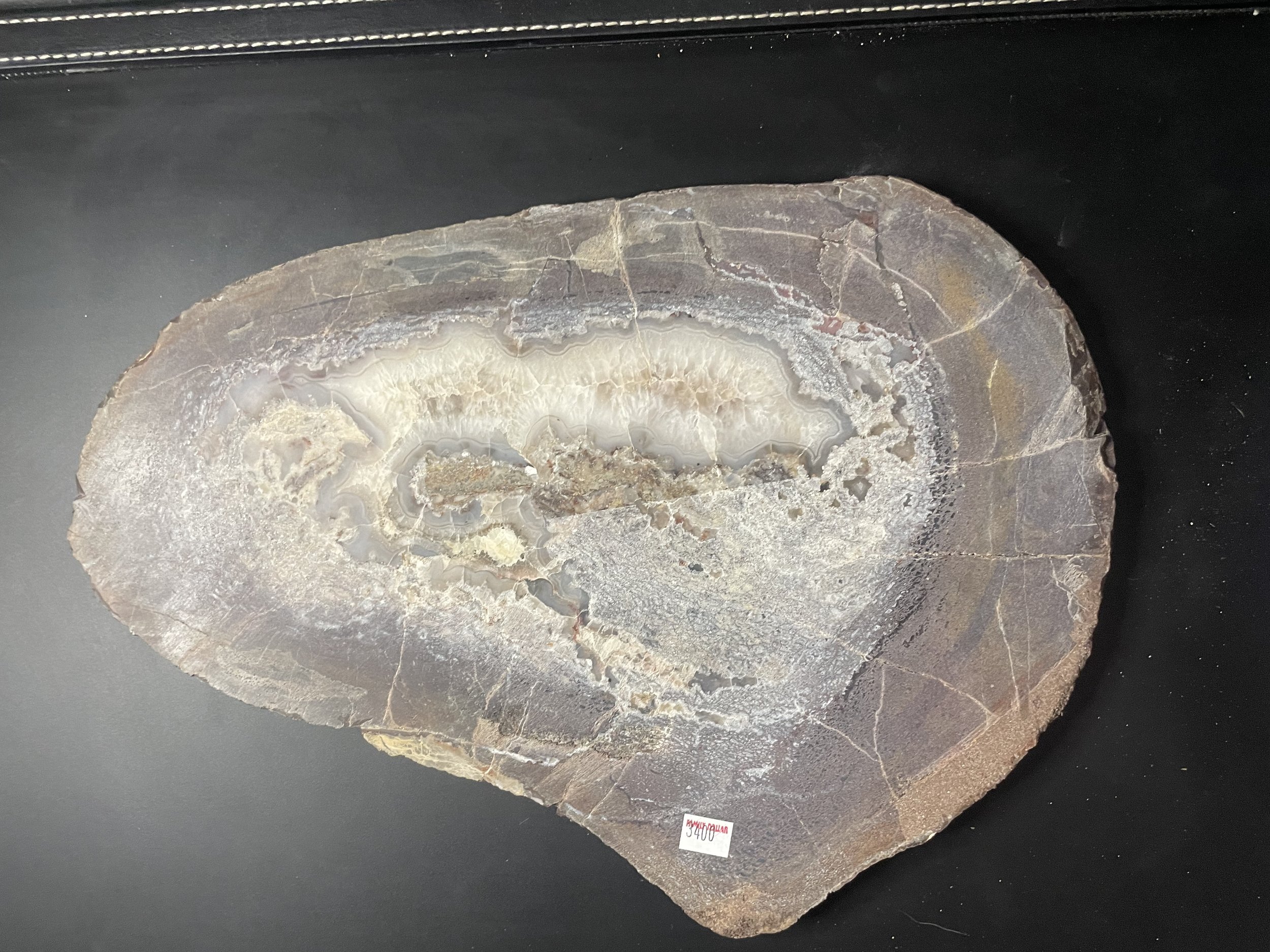 Image 3 of 12
Image 3 of 12

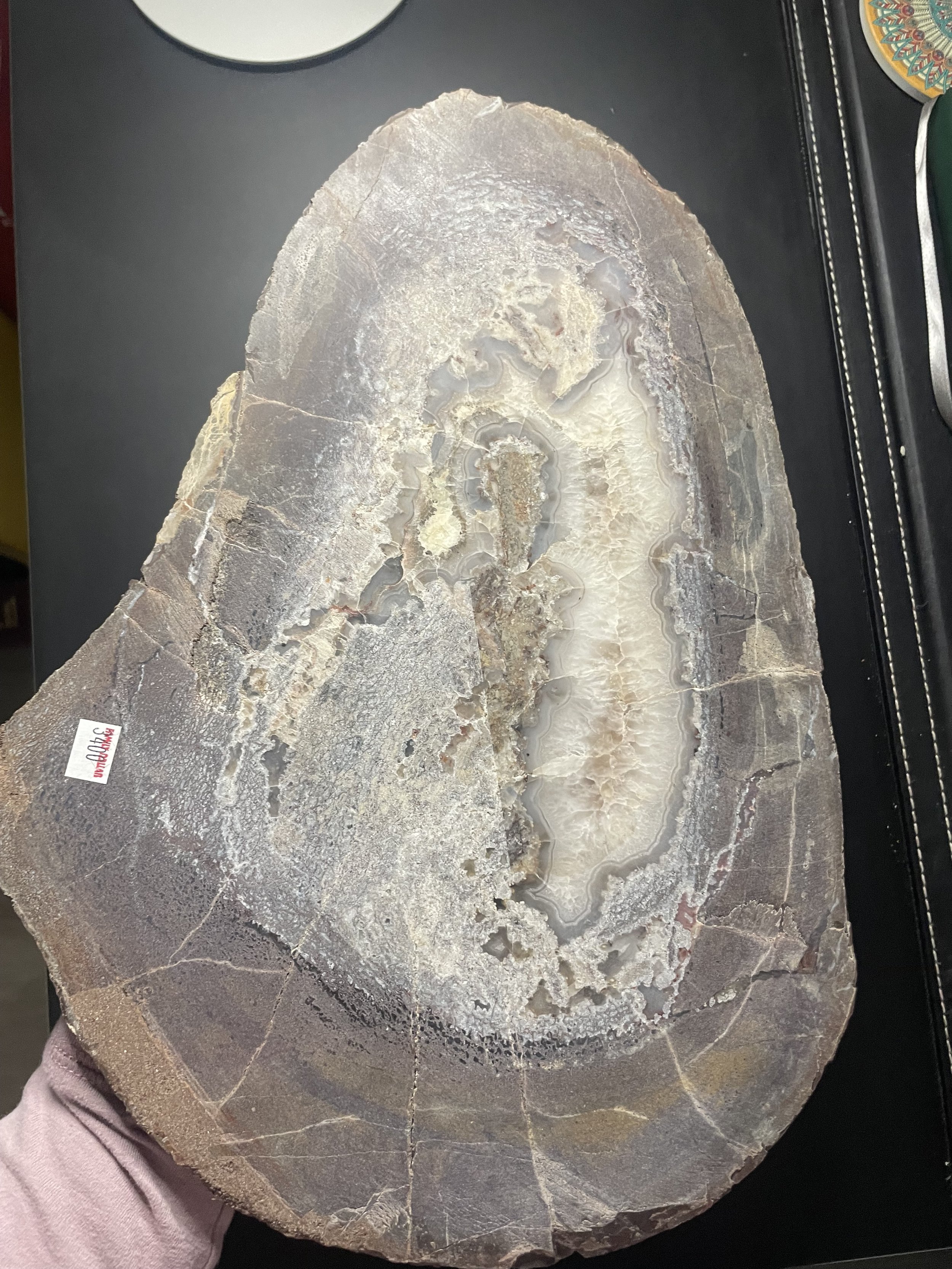 Image 4 of 12
Image 4 of 12

 Image 5 of 12
Image 5 of 12

 Image 6 of 12
Image 6 of 12

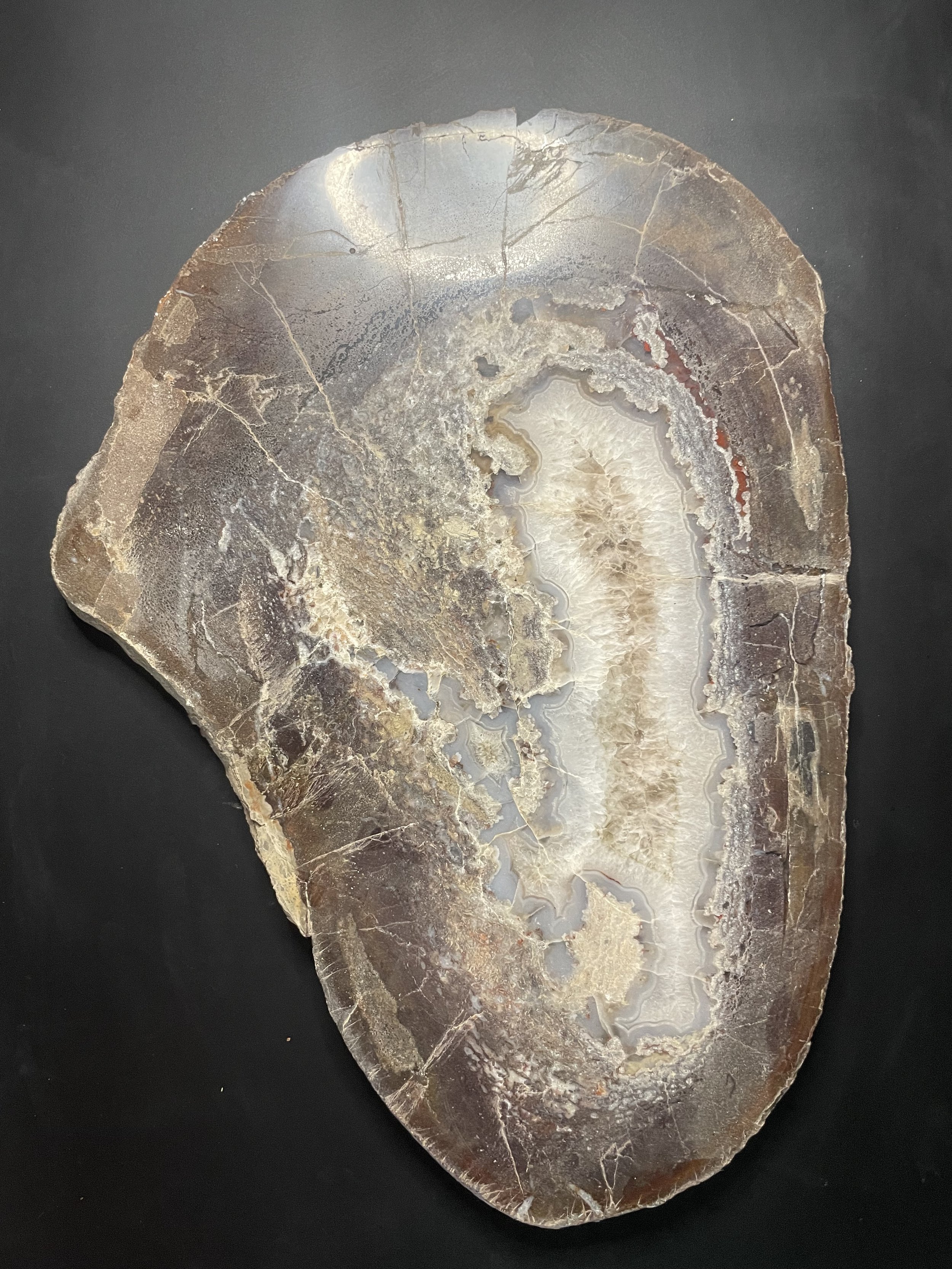 Image 7 of 12
Image 7 of 12

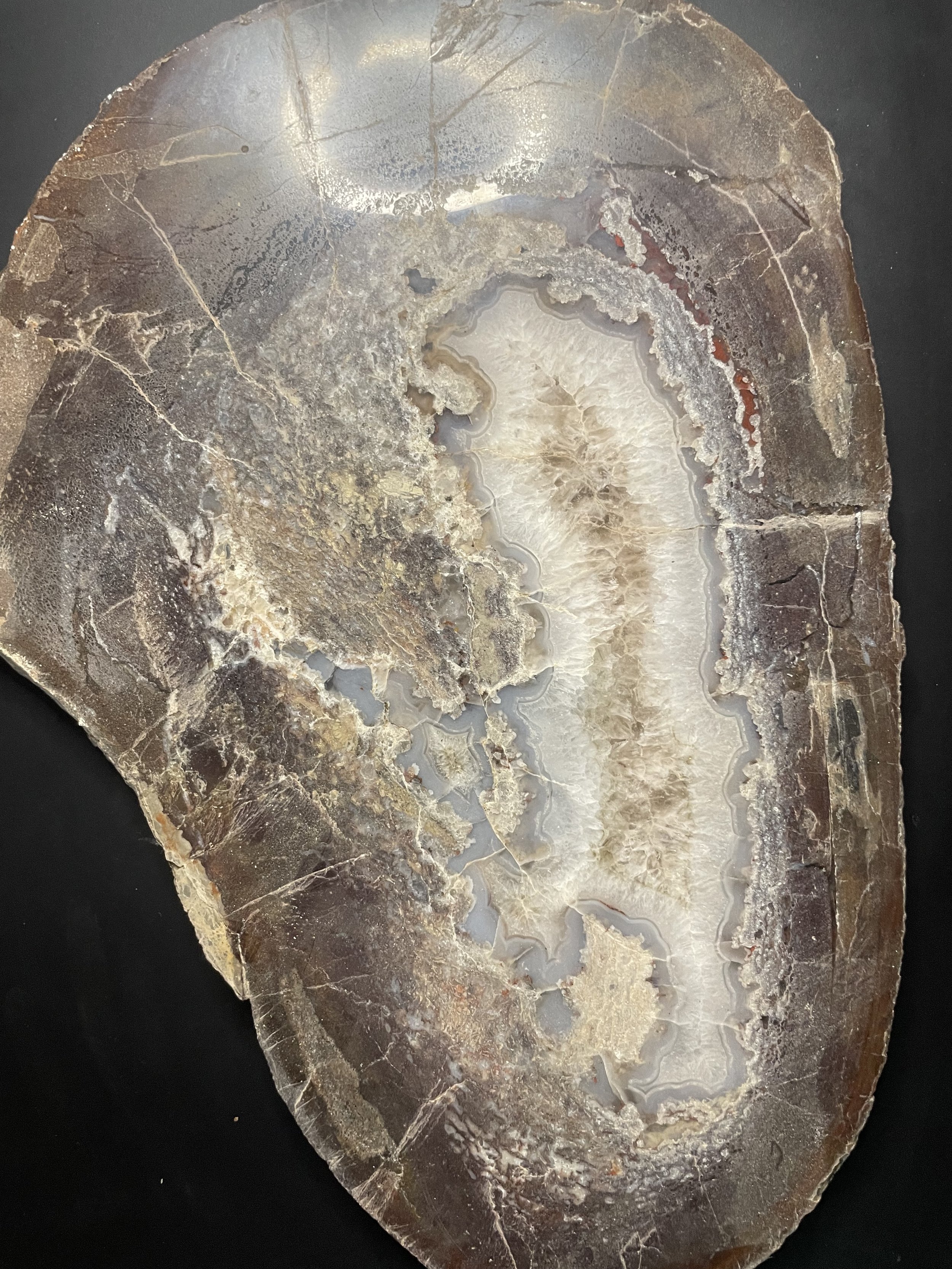 Image 8 of 12
Image 8 of 12

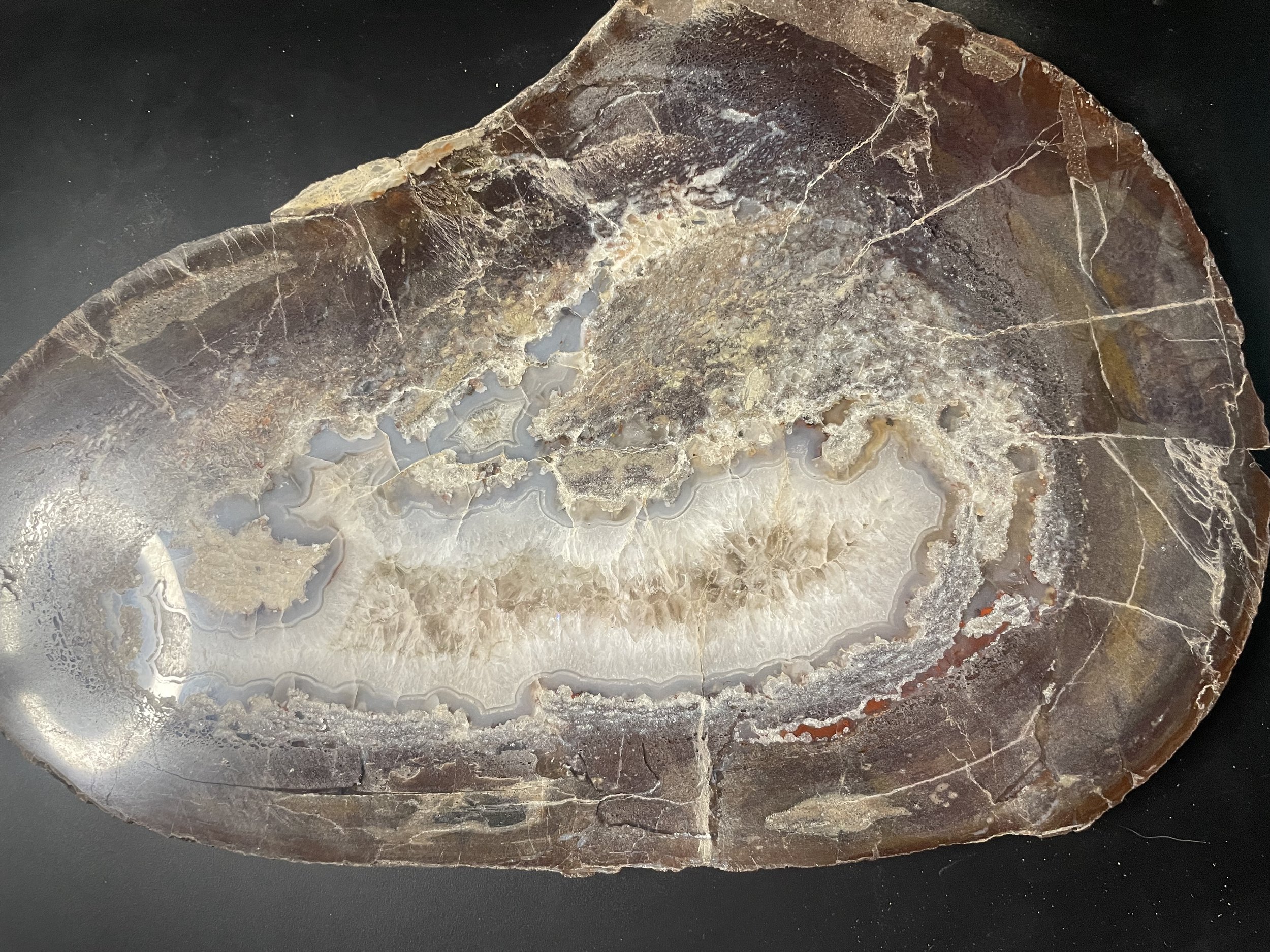 Image 9 of 12
Image 9 of 12

 Image 10 of 12
Image 10 of 12

 Image 11 of 12
Image 11 of 12

 Image 12 of 12
Image 12 of 12













Camarasaurus Gem Bone - Agatized Core Femur Slice
This is a piece of Late Jurassic aged, Agatized Camarasaurus Femur “Gem Bone / Gembone”, partially polished to reveal the wonderful internal cell structure. Agatized dinosaur bone is a rare form of fossilized dinosaur bone where the original fossilized bone has been naturally replaced with silica based compounds such as agate, jasper, chalcedony, or opal.
SPECIES
Camarasaurus Lentus
AGE/ERA
Jurassic 155 Million Years Old
LOCATION
Legally Collected on Private Land in Moffat, Colorado
FORMATION
Morrison
DIMENSIONS:
Length: 13.5”, Width: 10", Depth: 1”
Weight: 5.4 lbs
This is a piece of Late Jurassic aged, Agatized Camarasaurus Femur “Gem Bone / Gembone”, partially polished to reveal the wonderful internal cell structure. Agatized dinosaur bone is a rare form of fossilized dinosaur bone where the original fossilized bone has been naturally replaced with silica based compounds such as agate, jasper, chalcedony, or opal.
SPECIES
Camarasaurus Lentus
AGE/ERA
Jurassic 155 Million Years Old
LOCATION
Legally Collected on Private Land in Moffat, Colorado
FORMATION
Morrison
DIMENSIONS:
Length: 13.5”, Width: 10", Depth: 1”
Weight: 5.4 lbs
This is a piece of Late Jurassic aged, Agatized Camarasaurus Femur “Gem Bone / Gembone”, partially polished to reveal the wonderful internal cell structure. Agatized dinosaur bone is a rare form of fossilized dinosaur bone where the original fossilized bone has been naturally replaced with silica based compounds such as agate, jasper, chalcedony, or opal.
SPECIES
Camarasaurus Lentus
AGE/ERA
Jurassic 155 Million Years Old
LOCATION
Legally Collected on Private Land in Moffat, Colorado
FORMATION
Morrison
DIMENSIONS:
Length: 13.5”, Width: 10", Depth: 1”
Weight: 5.4 lbs
**Camarasaurus: Colorado’s Jurassic Herbivore**
The Camarasaurus, a notable sauropod dinosaur from the Jurassic period, was an impressive herbivore that roamed the regions of what is now known as Colorado. Living approximately 155 to 145 million years ago, the Camarasaurus was distinctive for its relatively large head and long neck, differing from many other sauropods with smaller head sizes. Camarasaurus typically reached lengths of up to 59 feet, with some specimens possibly growing larger. Its robust body was supported by four pillar-like legs, and it possessed a long, whip-like tail. The skull of Camarasaurus was box-like and more robust than that of many other sauropods, with nostrils positioned above the eyes. Its teeth were spoon-shaped, suggesting a diet that likely included tougher vegetation than that consumed by other sauropods with more peg-like teeth.
In Colorado, particularly in the Morrison Formation – a site famous for its wealth of dinosaur fossils – numerous Camarasaurus fossils have been discovered. These fossils include well-preserved skulls, a rarity among sauropods, as well as vertebrae, limb bones, and sometimes nearly complete skeletons. The discovery of these fossils has been crucial in understanding the anatomy, diet, and living habits of Camarasaurus.
